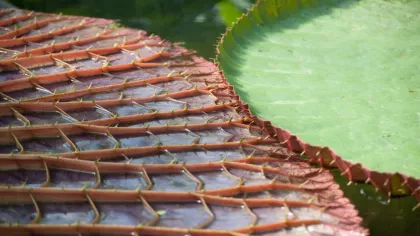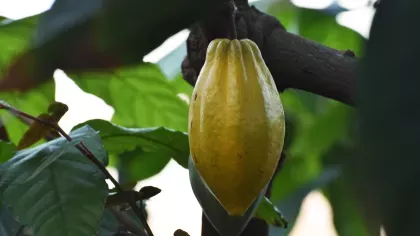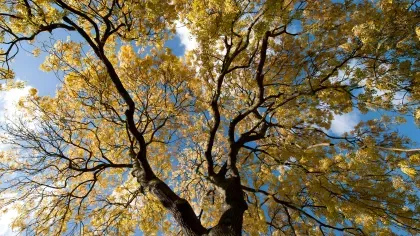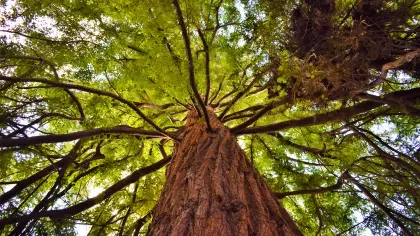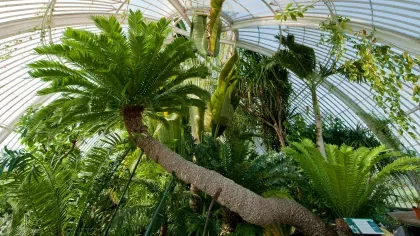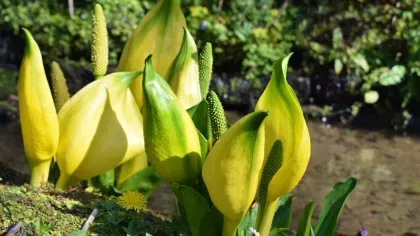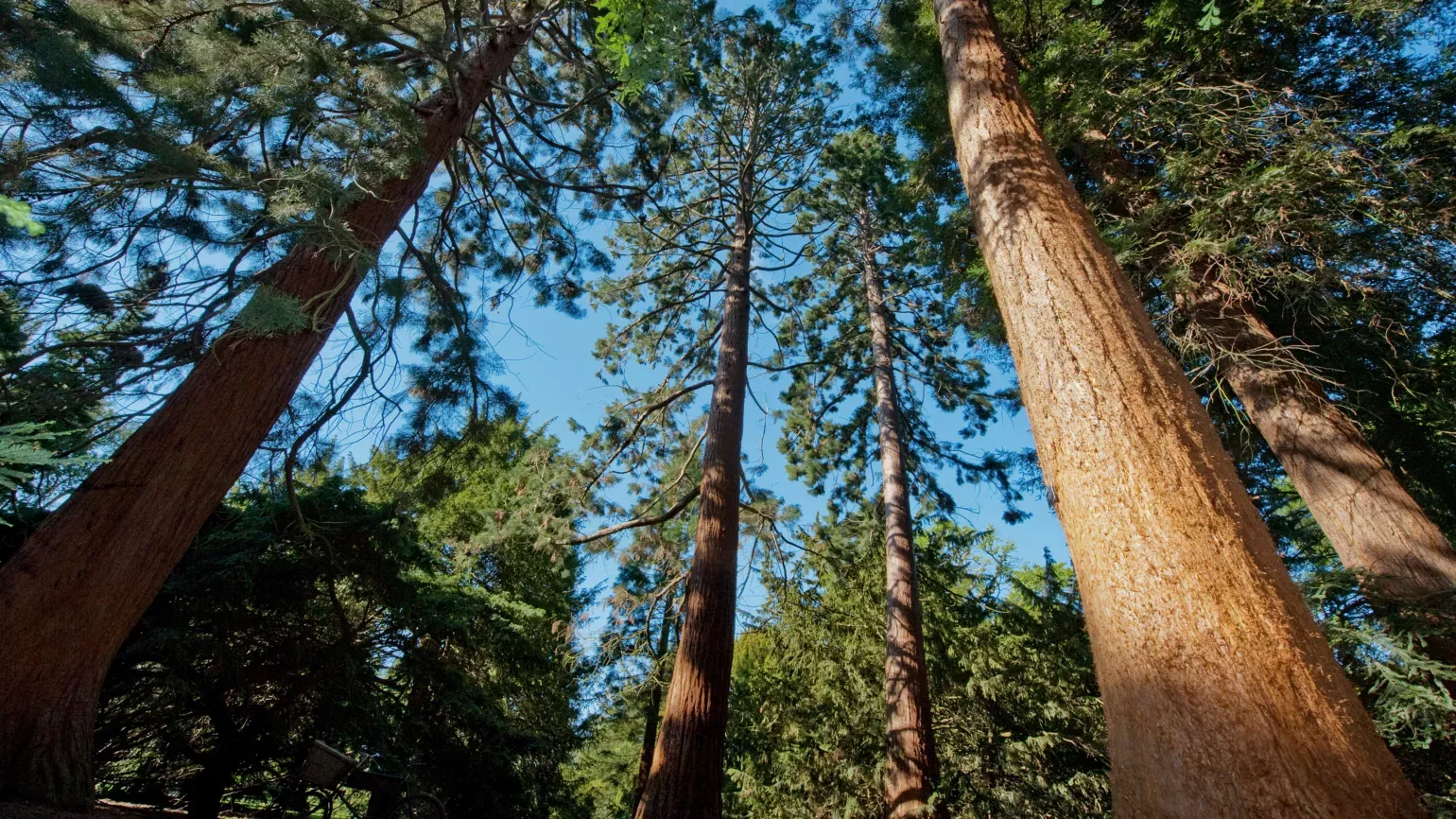
Giant redwood
On this page
It is not hard to tell where the giant redwood got its name. This Californian conifer is the largest tree in the world by volume.
Threatened by overexploitation and changes to fire management practices, the giant redwood is classified as Endangered according to the IUCN Red List.
Land management and tree planting schemes are underway to help protect nature’s giant.
The world’s largest, living giant redwood is an incredible 84 metres tall and over 11 metres wide. Named ‘General Sherman’, the tree lives in California's Sequoia National Park.
Plant description
A large, evergreen tree with thick, deeply grooved, reddish-brown bark. The branches form a dense, cone-shaped crown towards the top of the tree, whilst the lower branches swoop downwards and have upturned ends. The leaves are small, scale-like and arranged in spirals. The cones turn from green to reddish-brown with maturity and contain flattened, winged seeds. Both male and female cones grow on the same tree.
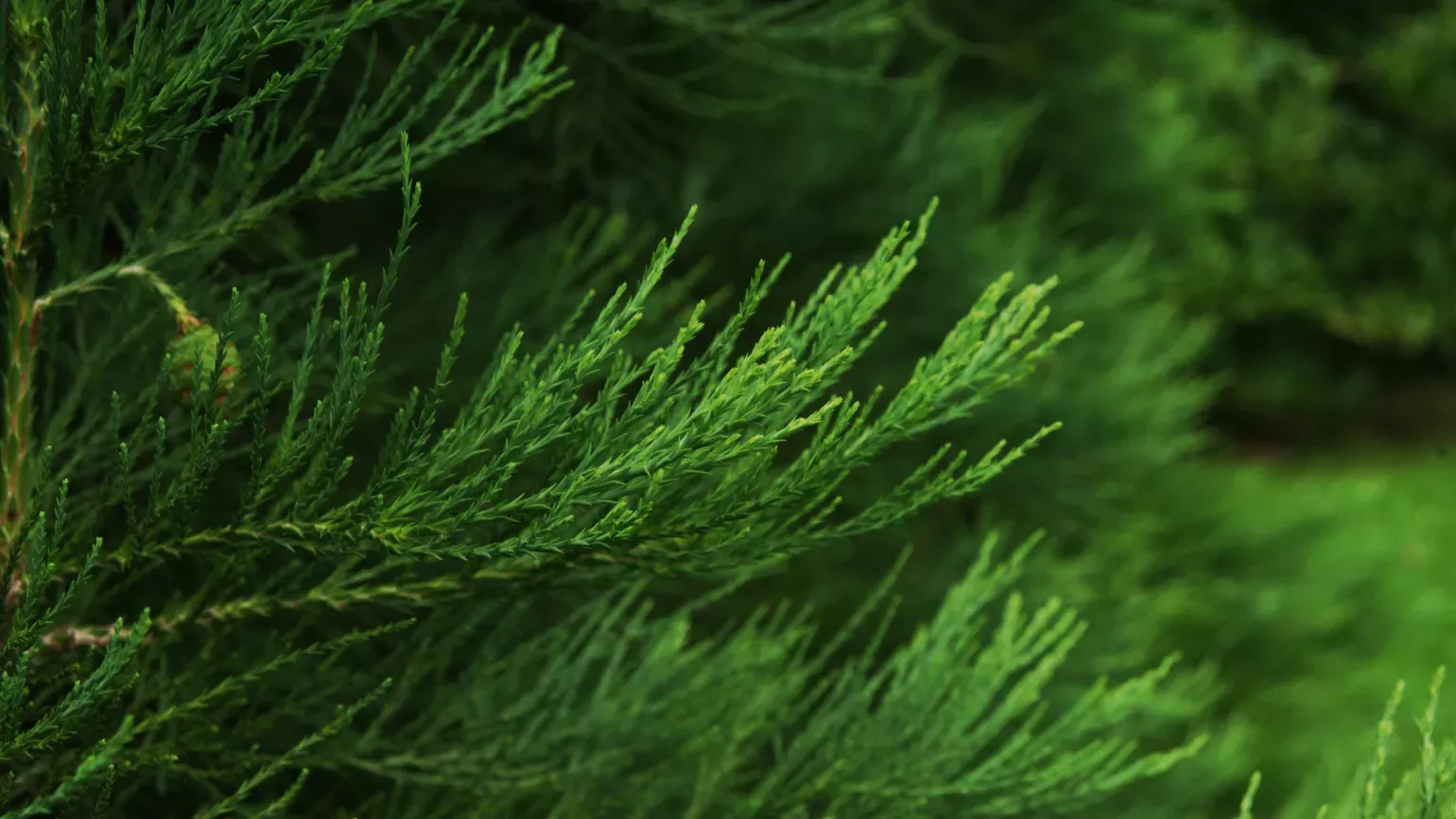
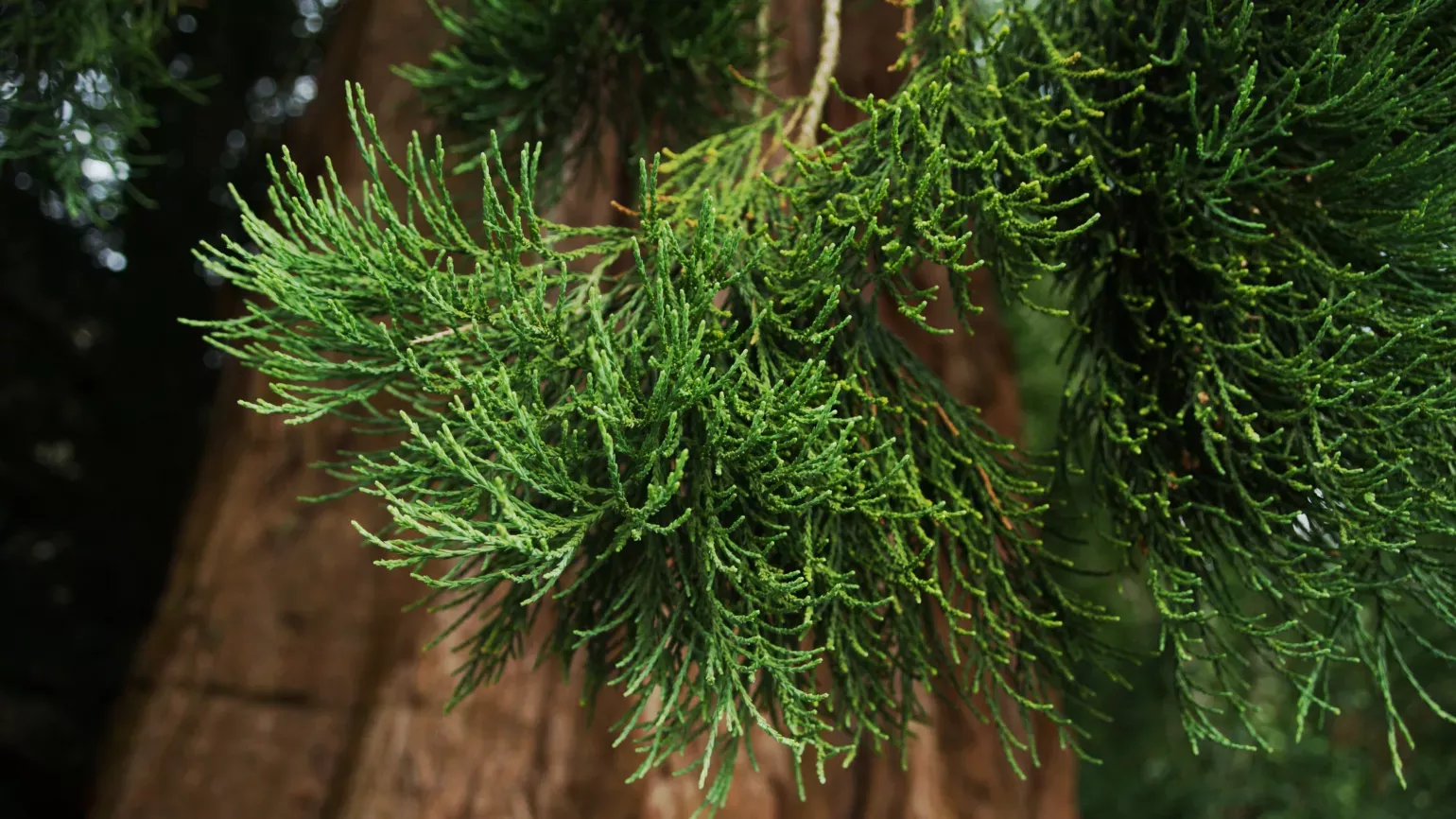
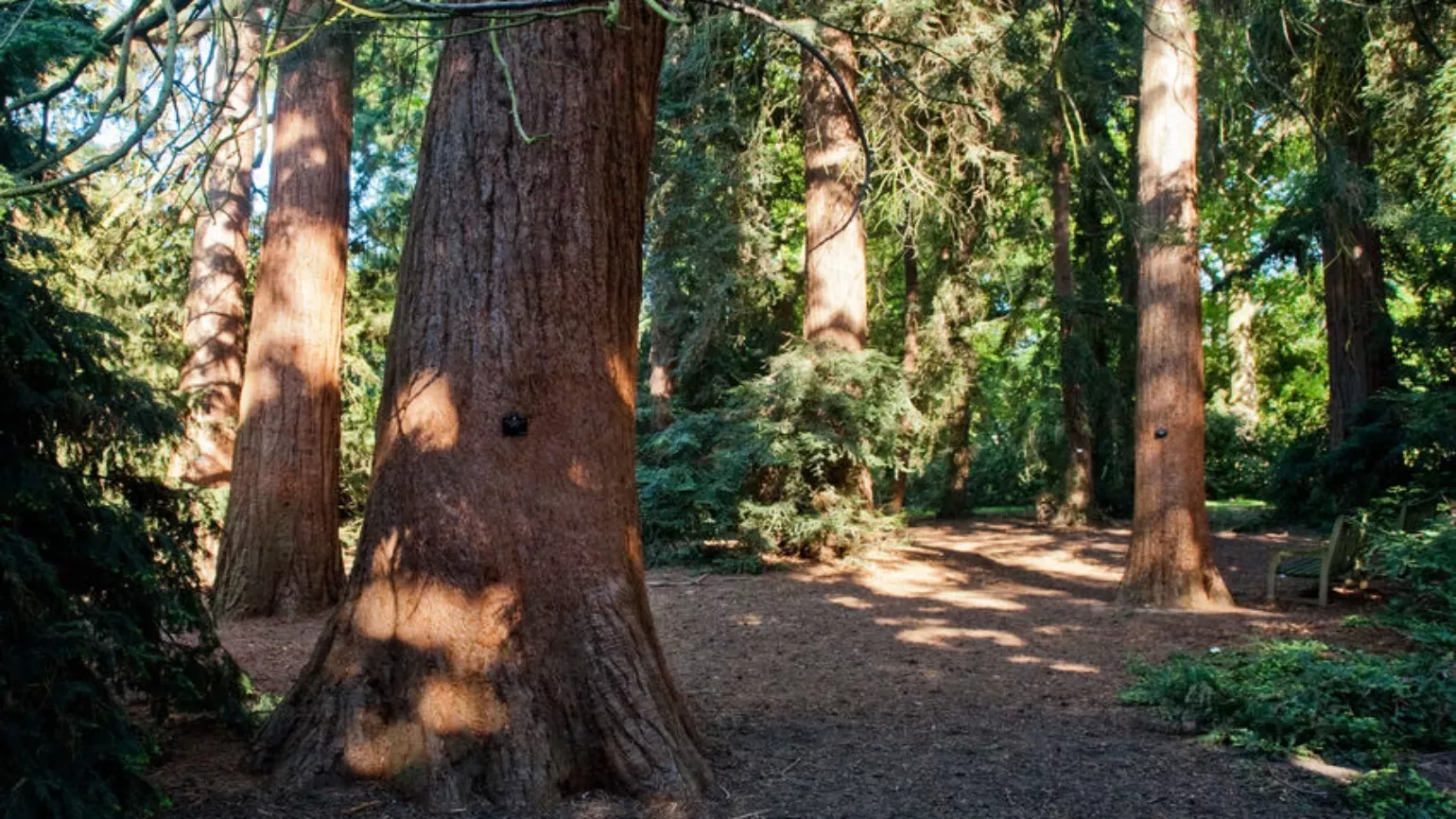
Plant uses
Cultural
The magnificent giant redwood has been widely planted as an ornamental tree in large parks and gardens.
It is a major tourist attraction in California and flagship species for conservation in the Unites States.
Materials and fuels
In the 19th and 20th centuries, wood from giant redwoods was used for construction.
Did you know?
Giant redwoods can live for over 3,000 years. One of their secrets to a long life is that they have a substance called tannin in their bark which boosts their resistance to pests and diseases.
Our wild botanic garden, Wakehurst, is home to the tallest living Christmas tree in the UK which is a giant redwood and measures 36 metres in height.
One of the giant redwoods in Wakehurst’s Horsebridge Wood was grown from seed collected from the second-largest tree in the world, General Grant, which stands at over 80 metres tall in California.
Giant redwoods have adapted to be fire resistant as they grow in fire prone areas. Their thick, spongy bark helps protect mature trees from damage, as well as the water-based sap they produce. The mature trees also self-prune low branches to prevent fire from spreading through the canopy.
Fire is essential for giant redwoods to reproduce. The heat from the fire causes the cones to open and disperse their seeds in the wind. Fires help clear the forest floor of plant competitors and the ashes left behind provide a fertiliser to help the giant redwood seedlings grow.
Where in the world?
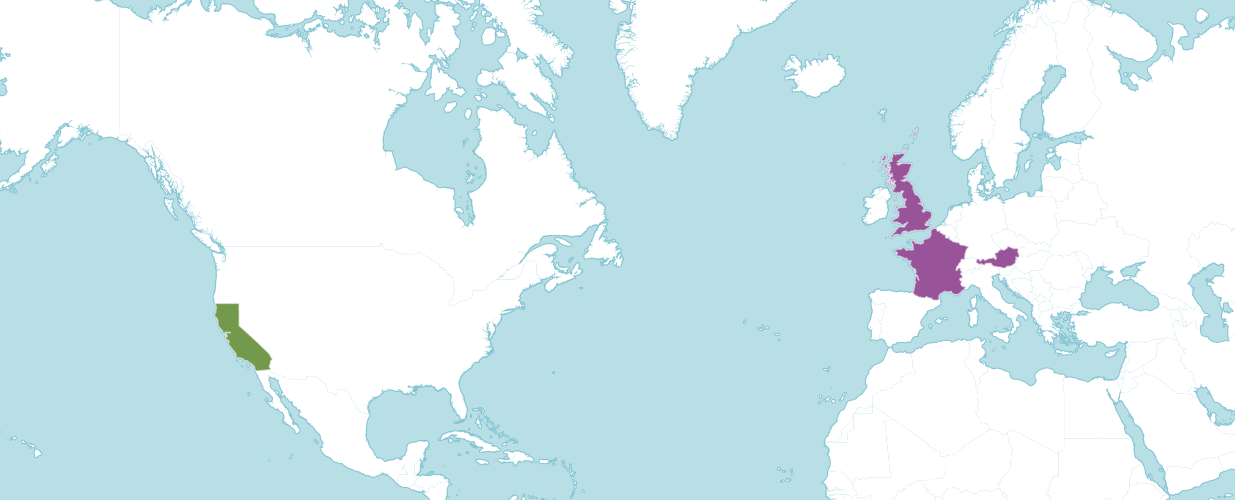
Mixed conifer forests. Grows best in well-drained, sandy loam soil and humid environments with a dry summer, rainy autumn, and snowy winter.
Find it in our gardens
Kew Gardens
A botanic garden in southwest London with the world’s most diverse living plant collection.
Location
Redwood Grove in the Arboretum
View map of Kew GardensWakehurst
Kew’s wild botanic garden in Sussex that has over 500 acres of plants from around the world and is home to the Millennium Seed Bank.
Location
View map of WakehurstOur work
The giant redwood is classified as Endangered according to the IUCN Red List.
The species has been overexploited by unsustainable logging. It is also threatened by changes to fire management regimes which have led to an increase in plant competitors that reduce the growth of giant redwood seedlings and allow fires to burn more devastatingly.
Scientists at Kew developed a method of ranking threatened species to help focus conservation efforts to where they are needed most.
The Evolutionary Distinct and Globally Endangered (EDGE) method rates species based on their evolutionary distinctiveness (how isolated a species is from its closest relatives on the tree of life) and its conservation status.
The giant redwood has been given an EDGE score of 3, placing it at position 16 on the EDGE Gymnosperm (naked-seed-bearing plants) list.
Seeds of the giant redwood are stored in our Millennium Seed Bank and we grow these magnificent trees in our living collection to help conserve the species.
